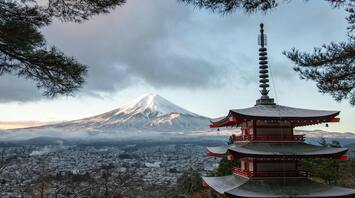Japan's Mount Fuji Finally Gets Snowcap in Record-Late 130th Year

After a long wait, a snowcap has finally covered the summit of Mount Fuji, Japan's iconic mountain, drawing the attention of tourists and meteorologists alike. This event is significant not only for nature enthusiasts and travelers but also for specialists, as the first snow this year was recorded at an exceptionally late date. According to meteorologists, for the first time in 130 years, snow on Mount Fuji appeared only in November, marking a notable deviation from usual timing.
According to Japanese meteorologist Mamoru Matsumoto, this autumn has been warmer than usual, which may have influenced the late formation of the snowcap. Scientists note that this phenomenon is not new: over recent years, the first snow on Fuji has been appearing later and later, though a clear causal link between climate change and this delay has yet to be established. Nevertheless, the warm autumn and high temperatures around the summit of Fuji clearly played a role in this unique event.
Tourists and Locals Relieved by the First Snow
The late arrival of the snowcap on Fuji has sparked a wave of positive emotions among tourists who specifically traveled to Japan to see this landmark in its winter attire. Many ventured to the foot of the mountain to enjoy the view of the snow-covered summit, as Fuji with its snowcap is one of Japan's most recognizable symbols, attracting millions of visitors each year.
Meteorology specialists continue to study the factors influencing climate changes in Japan. They warn that delays in the first snow on such iconic natural landmarks as Fuji may become a new normal in the coming years. This could impact the tourist season, as many travelers come specifically for the winter landscapes and the atmosphere of a Japanese winter.



















